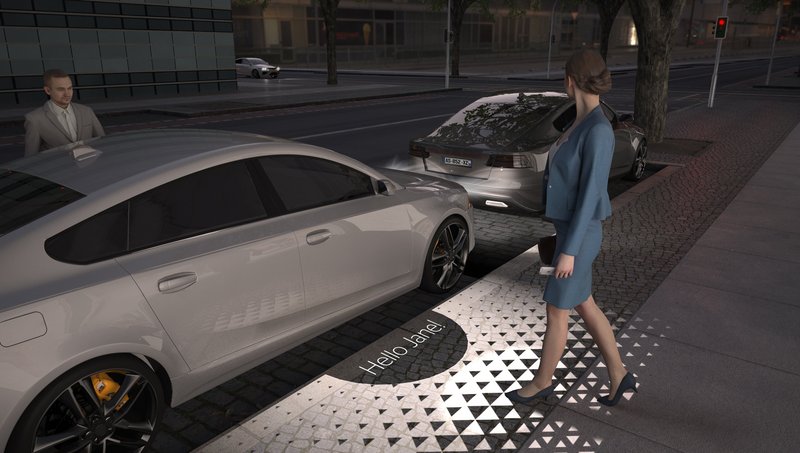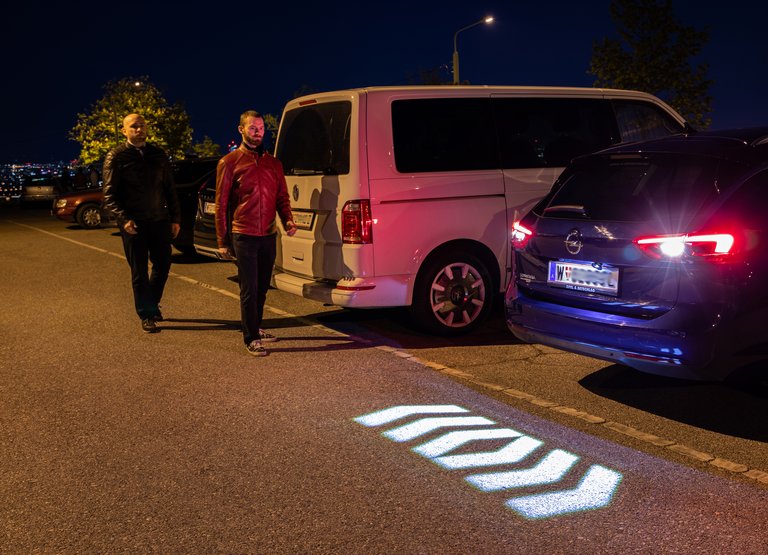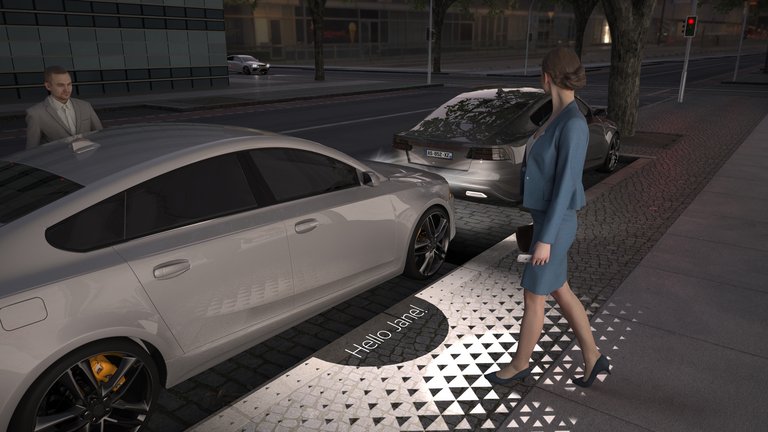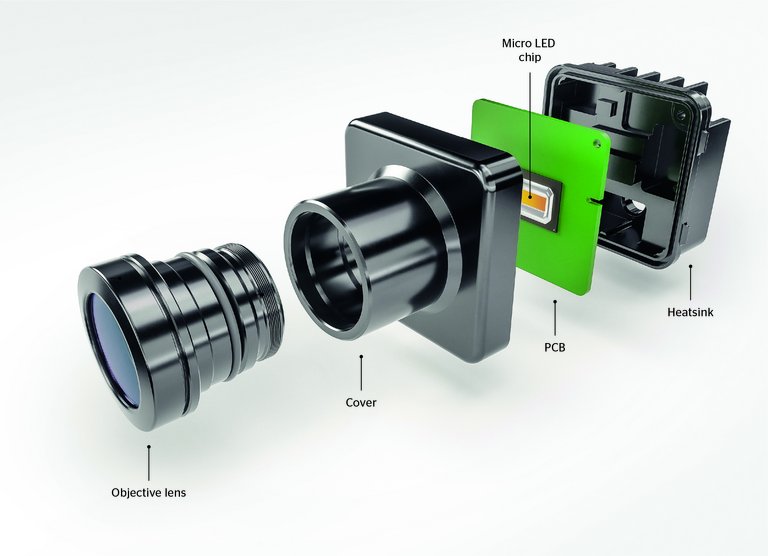Less traffic accidents resulting in injury: Near-field projection increases road safety
- Some 50,000 people are injured each year in Germany alone by cars turning and backing up
- Dynamic near-field projections with new micro-LED technology ensure greater safety near vehicles
- Easy-to-integrate system solution: power supply, GPU and micro-LED module in a box measuring only 5 x 5 x 5 centimeters
- Additional applications promise greater driver comfort and a better user experience
Frankfurt, June 14. Continental has developed a new system for generating dynamic projections near a vehicle. A compact, powerful projection module based on micro-LEDs provides for increased safety in the immediate vicinity of a vehicle and reduces the number of accidents involving injuries. The new solution is especially easy to integrate into a vehicle because all of the components – power supply, graphics processing unit and micro-LED module – fit into a cube measuring only five centimeters on a side. “With our new near-field projection system. We want to increase road safety and prevent traffic accidents involving injuries from happening – in line with our commitment to Vision Zero,” says Alem Helias, head of Light and Actuator Solutions at Continental Automotive. “In addition to solutions that provide better safety for drivers within the vehicle, we’re working on systems that are important for the safety of people around the vehicle. Micro-LED technology is a new approach to near-field projection. We want to take an active part in its design and develop it further with our customers.” In addition to projecting images that make turning and backing up safer, micro-LED technology offers ways to customize the user experience for drivers and make driving more pleasant.
Near-field projection enhances safety in the area around a vehicle
In 2022, more than 50,000 persons in Germany alone were injured by vehicles that turned, reversed or backed up improperly. Maneuvering in and out of parking spaces is another cause.1 For years, accidents of this kind have been among the most frequent causes of injuries. Vulnerable road users who are on foot or traveling by bicycle are especially at risk in such situations. It is all the more important to make road traffic safer for them and find appropriate solutions. “Near-field projection can display warning messages, vehicle outlines and current changes in direction onto the ground right near a vehicle,” explains Maximilian Austerer, head of Light Systems Innovation at Continental. “Road users can see right away what direction the vehicle will move.”
Dynamic turn signal and backup warnings projected at the rear of a vehicle are specific applications of this technology. They show people nearby if the vehicle is about to change direction or back out of a parking space. Scientific research carried out at the University of Applied Sciences in Vienna2 has demonstrated that warnings of this kind address an important concern of vulnerable road users. In the case of vehicle turns, more than 75 percent of the cyclists surveyed in the study preferred projections onto the ground over a light strip on the vehicle itself. In addition, more than half of the respondents regarded a dynamic display of symbols resembling a turn signal as much more intuitive than static text-based warnings.
New projection capabilities of micro-LEDS
The powerful micro-LED module used for fully dynamic 360-degree near-field projection can project images onto the ground with a resolution of 16,000 pixels. The micro-LED chip has a theoretical maximum luminous flux of 10,000 lumens, which means that warnings can easily be seen in situations where safety is an issue, such as poorly lit parking garages or twilight. Aside from the question of performance, micro-LED technology is less complex in terms of optical layout and has a simple electronic system architecture. As a result, the micro-LED module along with all the other system-relevant components like the power supply and GPU can fit into a one-box solution measuring only 5 x 5 x 5 centimeters. “This makes integration in the vehicle very simple and opens up possibilities that go beyond safety,” says Maximilian Austerer. Once such a system is installed, many other applications relating to comfort and customer loyalty can easily be implemented, such as a light carpet to welcome the driver.
[1] Source: Statistisches Bundesamt, https://www.destatis.de/DE/Themen/Gesellschaft-Umwelt/Verkehrsunfaelle/Tabellen/fehlverhalten-fahrzeugfuehrer.html
[2] Source: Berkin Karadag, A Study of the Influence of Automated Driving on the Development of Future Exterior Lighting Systems of Motor Vehicles (in German). Master’s thesis 2020, Vienna University of Applied Sciences

Christopher Schrecke
Media Spokesperson Safety and Motion
AUMOVIO



